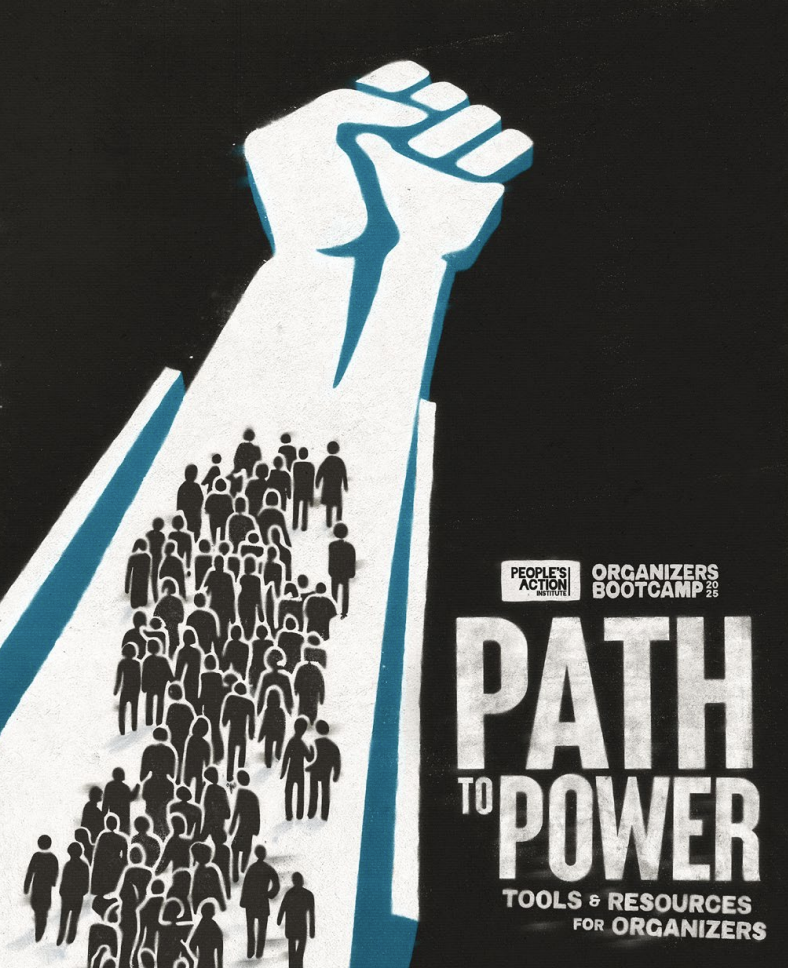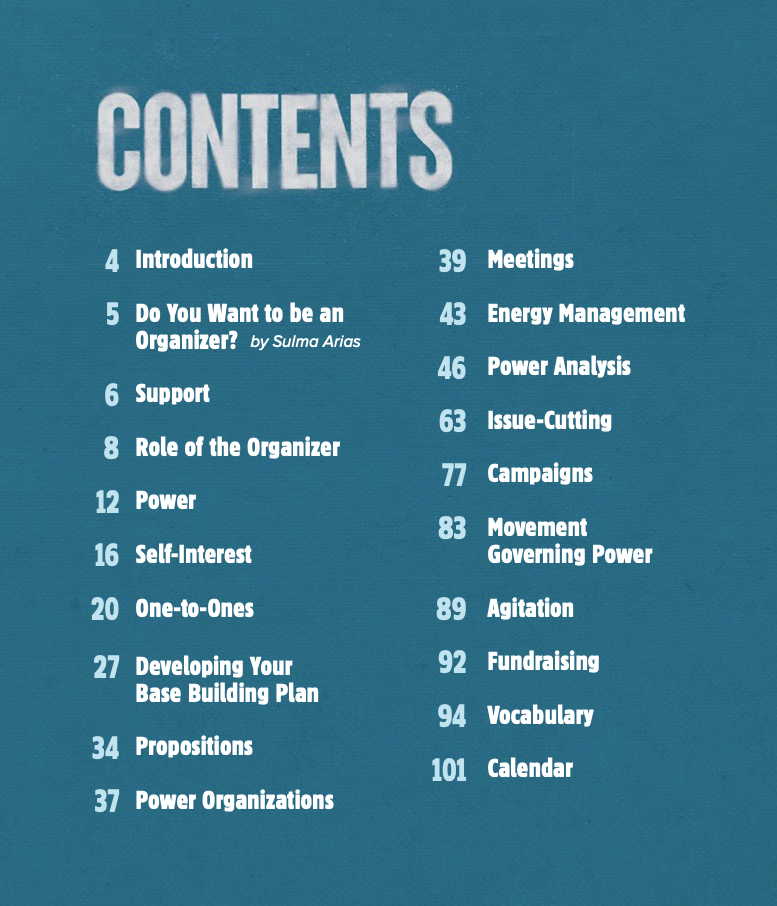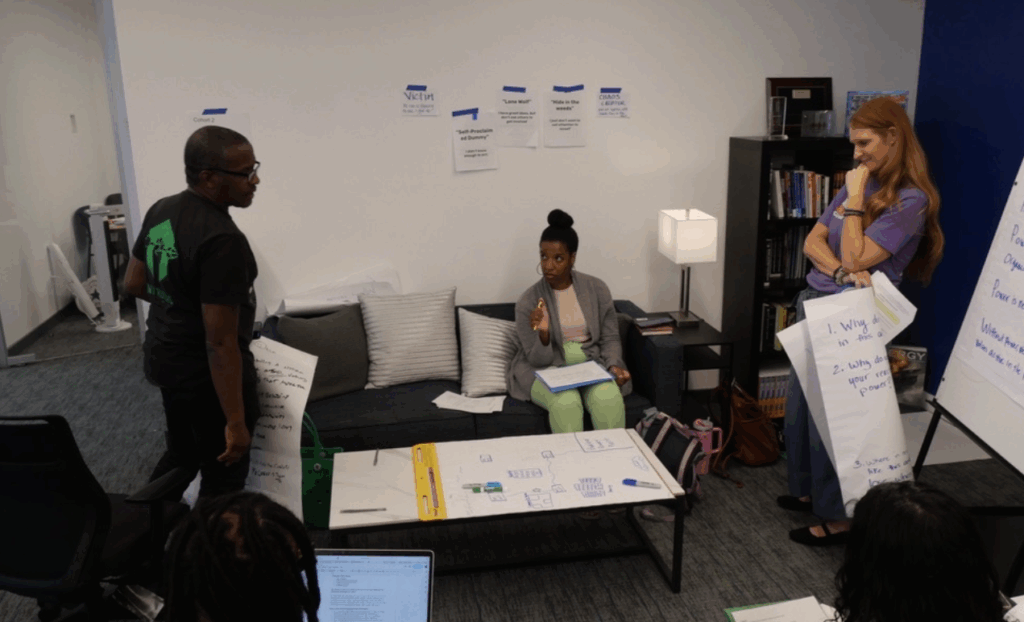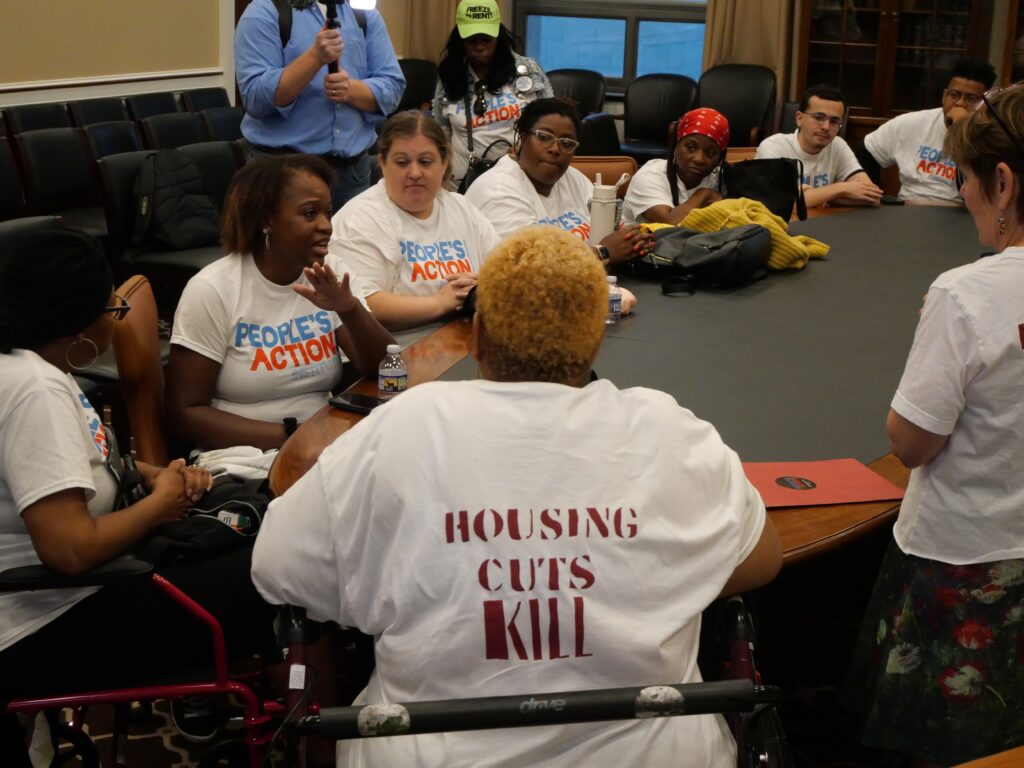These are some of the thorny questions People’s Action’s Organizer Bootcamp tackles head-on. This 13-week training distills, in one place, the best lessons and tools for community organizing.
“The Bootcamp is finding people who have no access, and no influence, to change that so they do have influence and they do have decision making power,” said trainer Christian Parra, who wrote a curriculum for the course based on his own experiences over a decade, building on the methodology People’s Action has developed over many years for its weeklong organizer training.

In addition to teaching the fundamental skills every organizer needs – how to listen, hold a one-to-one meeting, identify an issue, and develop pathways to leadership – the training covers power analysis and strategy, how to manage time and campaigns effectively and how to avoid burnout.

“Not only are they learning how to cut an issue and do power analysis, they’re learning how to run a strategic campaign or even a political campaign,” he said. “How do you look at your universe? How do you pull the data? How do you get the numbers? What is it that you need to do to win?”

It all comes together into what People’s Action calls “power-building”: creating organizations with a committed and growing base of members, who work together in concrete ways to advance solutions for the problems they face out of their shared self-interest.
“By the end of the program, organizers have not just doubled their base, but they have doubled their propositions and are giving people roles,” said Parra. “But you’ve got to have the ganas to do this work – the desire.”

For trainer LaTanya Lane, it’s about building trust.
“We move at the speed of trust,” said Lane. “Training gives people an opportunity to practice skills with people that they trust so they can go out into the world, build the power they need, and navigate the public square to bring the solutions that they have and live with into reality.”

The Bootcamp is intensive – it requires a 13-week commitment, with homework and followup. Even so, a few participants this year, like Erica Black-Johnson from Communities United for Action (CUFA), found time to attend both the virtual Bootcamp and the in-person regional Training for Trainers sessions, as well as to participate in the DC fly-in to protest housing cuts.

Black-Johnson plans to use these skills to build up CUFA’s in-house training programs, and to address the issues that affect her community most, such as youth violence and housing insecurity.
“Just start with what you know, and locate the resources and supports that are there,” said Black-Jonnson. “It’s like nurturing a plant: you start with a seed, and trainings like the Bootcamp and T4T are the nutrients that help them grow.”
There were 48 participants in this year’s Organizers Bootcamp, and more than 200 over the program’s four years of existence. To keep the spirit alive long after the Bootcamp ends, Parra organizes informal bimonthly meetings for alumni, to hold each other accountable in their work and as they grow as organizers.
“I want people to leave with a sense that they have the right to be seen in this world,” he said.